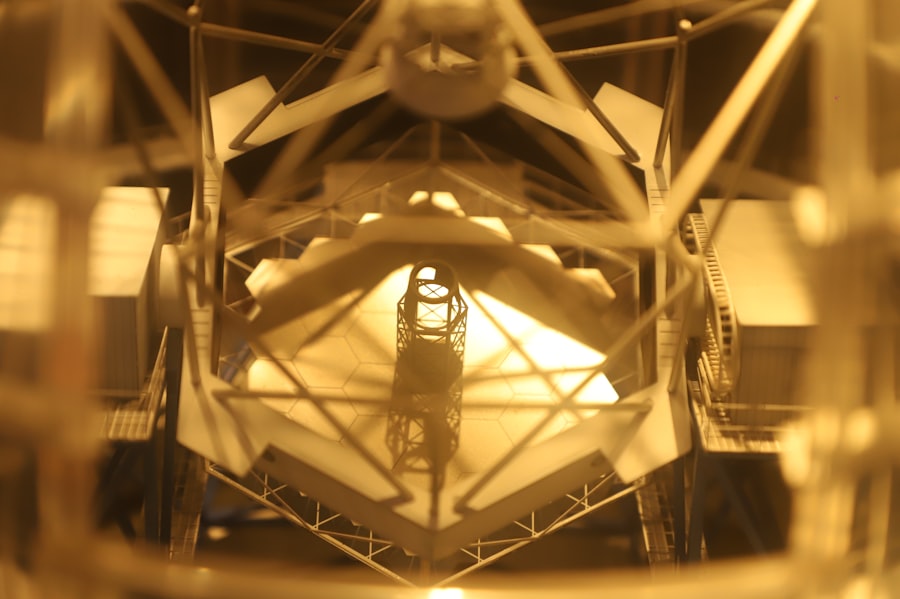Space engineering serves as the backbone of modern space exploration, providing the necessary frameworks, technologies, and methodologies to push the boundaries of human knowledge and capability beyond our planet. This discipline encompasses a wide range of activities, from the design and construction of spacecraft to the development of launch systems and mission planning. The intricate interplay between various engineering fields—mechanical, electrical, software, and materials engineering—enables the creation of sophisticated systems that can withstand the harsh conditions of space.
For instance, the engineering behind NASA’s Perseverance rover involved not only advanced robotics but also cutting-edge materials that can endure extreme temperatures and radiation levels on Mars. Moreover, space engineering has facilitated numerous landmark missions that have expanded our understanding of the universe. The Hubble Space Telescope, for example, has provided breathtaking images and invaluable data about distant galaxies, nebulae, and exoplanets.
The engineering feats involved in launching and maintaining such a telescope in low Earth orbit are monumental. Engineers had to consider factors such as orbital mechanics, thermal control, and communication systems to ensure that Hubble could operate effectively for decades. Each successful mission not only enhances our scientific knowledge but also inspires future generations to pursue careers in STEM fields, thereby perpetuating a cycle of innovation and discovery.
Key Takeaways
- Space engineering plays a crucial role in advancing space exploration by developing technologies for spacecraft, rovers, and habitats for astronauts.
- Cutting-edge technologies in space engineering include 3D printing, artificial intelligence, and advanced propulsion systems, which are revolutionizing space exploration.
- Space engineering has a significant impact on sustainable space travel by developing reusable rockets, efficient life support systems, and renewable energy solutions for long-duration missions.
- Advancements in space engineering for planetary colonization involve creating self-sustaining habitats, terraforming technologies, and resource utilization on other planets.
- The future of space engineering includes interstellar travel and beyond, with the development of advanced propulsion systems and spacecraft capable of traveling to other star systems.
Cutting-Edge Technologies in Space Engineering
The field of space engineering is characterized by rapid technological advancements that continually reshape our approach to exploration. One of the most significant developments in recent years is the advent of reusable rocket technology, exemplified by SpaceX’s Falcon 9. This innovation has drastically reduced the cost of launching payloads into space, making it more accessible for both governmental and commercial entities.
The engineering behind the Falcon 9’s first stage involves intricate designs that allow it to land vertically after launch, a feat that was once considered impossible. This capability not only saves resources but also paves the way for more frequent missions, thereby accelerating the pace of exploration. In addition to reusable rockets, advancements in propulsion systems are revolutionizing how we travel through space.
Ion propulsion systems, which utilize electric fields to accelerate ions for thrust, offer a more efficient alternative to traditional chemical rockets. NASA’s Dawn spacecraft, which explored the asteroid belt, employed ion propulsion to travel vast distances with minimal fuel consumption. This technology allows for longer missions and greater payload capacities, enabling scientists to explore more distant celestial bodies without the constraints imposed by conventional propulsion methods.
As engineers continue to refine these technologies, we can expect even more ambitious missions that push the limits of our current capabilities.
The Impact of Space Engineering on Sustainable Space Travel

Sustainability has become a critical focus in space engineering as humanity seeks to explore beyond Earth while minimizing its environmental footprint. The concept of sustainable space travel encompasses not only the efficient use of resources but also the responsible management of space debris and the preservation of celestial bodies. Engineers are now tasked with developing technologies that can recycle materials in space, such as water and oxygen, which are essential for long-duration missions.
The International Space Station (ISS) has been a testing ground for such technologies, demonstrating how closed-loop life support systems can be implemented to support human life in orbit. Furthermore, sustainable practices extend to the design and operation of spacecraft themselves. Engineers are increasingly incorporating renewable energy sources into their designs, such as solar panels that harness sunlight for power generation.
The European Space Agency’s Solar Orbiter mission utilizes advanced solar panels to collect energy while studying the Sun’s atmosphere. By prioritizing sustainability in engineering practices, we can ensure that future missions do not compromise the integrity of space environments or contribute to pollution in orbit.
Advancements in Space Engineering for Planetary Colonization
| Advancements | Metrics |
|---|---|
| Spacecraft Efficiency | Improved fuel efficiency, longer mission durations |
| Life Support Systems | Enhanced recycling, better waste management |
| Planetary Resources | Identification and utilization of local resources |
| Robotic Exploration | Advancements in autonomous navigation and sample collection |
| Habitat Design | Development of sustainable and safe living spaces |
As humanity sets its sights on planetary colonization, space engineering plays a pivotal role in developing the technologies necessary for establishing permanent habitats beyond Earth. Mars is often considered the most viable candidate for colonization due to its similarities to our planet; however, significant challenges remain. Engineers are exploring various habitat designs that can protect inhabitants from harsh Martian conditions, including radiation exposure and extreme temperatures.
Concepts such as inflatable habitats or structures built from Martian regolith are being investigated to create livable environments on the Red Planet. In addition to habitat construction, engineers are also focusing on life support systems that can sustain human life over extended periods. This includes developing agricultural technologies that can function in low-gravity environments and creating systems for recycling waste into usable resources.
NASA’s Veggie experiment aboard the ISS has already demonstrated that plants can grow in microgravity, providing valuable insights into how we might cultivate food on Mars or other celestial bodies. These advancements not only support colonization efforts but also contribute to our understanding of life sciences in extreme environments.
The Future of Space Engineering: Interstellar Travel and Beyond
Looking ahead, the field of space engineering is poised to tackle one of humanity’s most ambitious goals: interstellar travel. While current propulsion technologies limit us to our solar system, theoretical concepts such as warp drives or antimatter propulsion are being explored by engineers and physicists alike. The idea of a warp drive, which would allow spacecraft to travel faster than light by bending space-time, remains largely theoretical but has garnered interest from researchers who believe it could one day become a reality.
Moreover, advancements in artificial intelligence (AI) and robotics are expected to play a crucial role in future interstellar missions. Autonomous spacecraft equipped with AI could navigate vast distances without direct human control, making real-time decisions based on environmental conditions encountered during their journey. This capability would be essential for missions that could last decades or even centuries.
As engineers continue to innovate and push the boundaries of what is possible, interstellar travel may transition from science fiction to achievable reality.
Challenges and Opportunities in Space Engineering

Despite the remarkable progress made in space engineering, numerous challenges persist that must be addressed to ensure continued advancement in this field. One significant challenge is the high cost associated with developing and launching new technologies. While reusable rockets have reduced costs significantly, funding remains a critical issue for many space agencies and private companies alike.
Engineers must find ways to innovate within budget constraints while still delivering reliable and effective solutions. Another challenge lies in the harsh environment of space itself. Engineers must design systems that can withstand extreme temperatures, radiation levels, and microgravity conditions over extended periods.
This requires rigorous testing and validation processes to ensure that all components function as intended during missions. However, these challenges also present opportunities for innovation; engineers are continually developing new materials and technologies that can enhance performance and reliability in space.
Collaboration and Innovation in Space Engineering
Collaboration is a cornerstone of success in space engineering, as it brings together diverse expertise from various fields to tackle complex problems. International partnerships have become increasingly common in recent years, with agencies like NASA collaborating with ESA (European Space Agency), Roscosmos (Russian Federal Space Agency), and private companies like SpaceX and Blue Origin. These collaborations enable knowledge sharing and resource pooling, leading to more ambitious projects than any single entity could achieve alone.
Innovation often arises from these collaborative efforts as teams combine their unique perspectives and skills. For example, NASA’s Artemis program aims to return humans to the Moon by 2024 through partnerships with commercial companies for lunar lander development and surface operations. By leveraging the strengths of both public and private sectors, engineers can accelerate progress toward ambitious goals while fostering a culture of innovation that benefits all participants.
Ethical and Environmental Considerations in Space Engineering
As space exploration expands, ethical considerations become increasingly important within the realm of space engineering. The potential for contamination of other celestial bodies raises questions about our responsibility as explorers. Planetary protection protocols are essential to prevent Earth microbes from interfering with extraterrestrial ecosystems and vice versa.
Engineers must design spacecraft with sterilization methods that ensure compliance with these protocols while still achieving mission objectives. Environmental considerations also extend beyond planetary protection; they encompass the sustainability of our own planet as well. The increasing amount of space debris poses a significant threat to operational satellites and future missions.
Engineers are tasked with developing solutions for debris mitigation and removal while ensuring that new technologies do not exacerbate this issue. By addressing these ethical and environmental challenges head-on, space engineers can contribute to a more responsible approach to exploration that respects both our planet and those we seek to explore beyond it.


